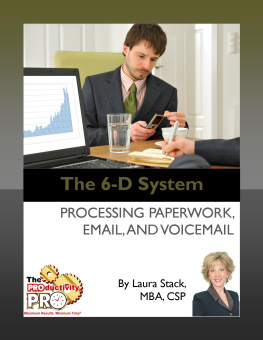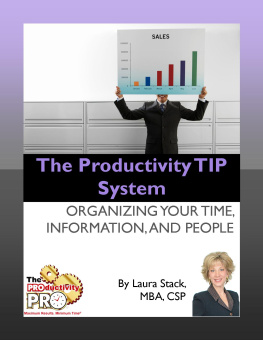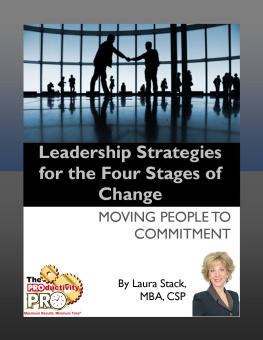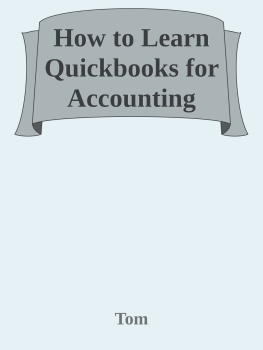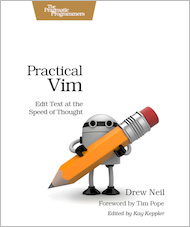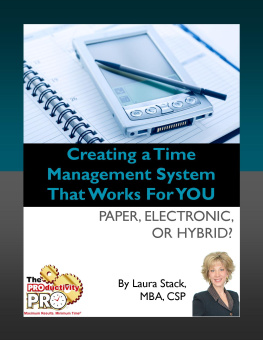THE 6-D SYSTEM:
Processing Paperwork, Email, and Voicemail
In this ebook, well cover what I call the Six Ds: the sixdifferent decisions that you can use to process any type of information. Ivebeen using this system since 1992. Well first talk about the generic meaningfor each D, and then well apply it to the different types of informationthat you encounter.
The Basics
Information in general can first be Discarded. This isthe first D. Why do we put this one first? Because whatever you dont tosswill have to be worked through your system. This will benefit those of youwith that Depression mentality, or packrat syndrome, by getting rid of asmuch as possible right at the outset. Take a deep breath and toss it! Dontjust say, Oh, I might need this again someday. Ask yourself why you shouldkeep it. There needs to be a good reason in order for you to hang ontosomething.
The next D is Delegate. If you cant throw somethingaway, maybe you can give it away to someone else. This doesnt have to bedelegation in a formal sense. This person may not work for you. In fact, youmay actually be the "delegatee." So sometimes you could Discussthat might be another good D here or you could Distribute it. The goalis to basically transfer something from your sphere of control to someoneelses.
Next is the third D, which is Do something with theinformation. This is an item that requires your action things which you needto actually to do something with. The fourth D is the result of accepting that, Yes, I need todo something with this, but I cant just drop everything and do it right now. You would need to do that one at a later Date. Some people have tried to usethe word Delay or Defer in this instance, but I caution against this, as itdoesnt specify when exactly youre delaying the action to. It would be likehaving a giant folder called Pending, which wouldnt work because you wouldhave to keep looking at the same thing multiple times before you did anythingwith it. You must be specific with this step. The more you can nail down whenyou need to see this, think about this, or do this again, the better yourorganization is. Hence, were going to Date items in the fourth step.
The fifth D simply means no action is required at all; itneeds to go in a Drawer. On the surface, this seems like the first D; butit actually saves the information for future reference. It isnt somethingthat requires action, but its not something you want to toss either, becauseyou need to be able to retrieve it, or you want to retain it for future use.
The last D is to Deter, or stop the information fromever coming across your desk again. Its not merely throwing it away; itsmaking sure youve eliminated the possibility that it will come back to you. Youll have to do some extra steps to make sure that these items are halted intheir tracks.
Now that Ive introduced the six Ds, lets take a look atdifferent media and decide how we would organize them through our system. Wehave three primary types of inputs to our system: paper, email, and voicemail. Now that we have the foundations for decision-making available to us, we canwalk through the different media using the 6 Ds and see what the actions orsteps would be.
Paper Method
1. Discard
Well start with paper. We know the first D is toDiscard. For paper, what would that mean? If you were working on your 6 Dswith a piece of paper, you would throw it away, put it in your recycle bin, orshred it if it were highly confidential. Your system would stop there. Youwould have your Start to Finish; you did it immediately and now yourethrough.
2. Delegate
If you cant toss that piece of paper, then you need toproceed to the next step. The second step in our 6 Ds was to Delegate. IfI wanted to get that piece of paper to somebody else, what would I do with thatitem? I could route it to them if I had a routing method in my office, such asinteroffice mail. I could hand deliver it, perhaps by putting it in theiroffice mailbox. Some people might fax or scan and email the paper. Perhapsyou would literally mail or FedEx it in order to get that information tosomeone right away. However, be really careful about reading an item andplanning on sending it to someone and then putting it down and going on to thenext thing. Remember, while its in your hand its glued to you. Grab asticky note immediately, write the necessary instructions, and put it in aninteroffice envelope. Make sure it has moved through your system all the waybefore you move on to the next item.
3. Do
If you cantthrow away the paper and you cant give the paper to someone else, go on to thenext step. The third D in our system is Do. The very next question youhave to ask yourself is, Can I do this in three minutes or less? If theanswer is yes, complete the process! If its easy to sign or check off,initial or write a comment, do these things right away. You need to move theseitems out of your office before you have multiple small things that you nowhave to re-read because you didnt take care of them immediately. Get used tocompleting those simple things without delay.
4. Date
The fourth item in our 6 D system is Date. If I cantthrow it away, give it away or do it now, I need to do it later. Where wouldyou put a piece of paper that you didnt want to see again for two weeks? Youwould put it into your tickler file. Thus, you need to make sure when you goback to implement this, you start your 6 D system by setting up your ticklerfile. Youre going to need that for this step in particular, or else you wonthave a place to put things that you need to have magically pop up again in thefuture.
5. Drawer
Item five is the D for Drawer. What's the drawer forpaper? If its something that doesnt require any action, it would go into oneof the other files that we talked about in an earlier e-book. So, whether itsa customer or client file, a red project file, a yellow idea file, a bluesubject file, or a reference file, you need to have homes for paper so you knowwhere youre going to put things, rather than just putting papers chronologicallyacross your desk or saying that a certain type of papers is in the upper lefthand side of the desk, and other types are in the lower right hand side. Takethe time to set up these structures, so that as youre going through your 6 Dsystem, you easily know where everything will go.
6. Deter
The last one is D for Deter. To keep a piece of paperfrom coming to you again, you have to remove yourself from the distributionlist. You have to tell the person that you are no longer on the team orcommittee, and dont need to receive that particular piece of information. Ifyou receive mail for someone whos no longer there, write on the outside Nolonger here and return it. Its a constant battle to keep things cleaned up,but it helps in terms of the avalanche of paper that were always receiving.
Email
Next, well look at email. Ill explain using MicrosoftOutlook,as about 95% of my clientele use this software. Some people use Lotus Notes and some areusing GroupWiseas well. The principles are exactly the same; youll just need to figure outhow to make it work in your particular platform as I demonstrate the steps inOutlook.
Discard
The first D, of course, is Discard. This means youwould delete the email. This doesnt require extensive explanation; I hopethat use your delete key often!
Delegate
If you cant delete an email, which I hope you opt for 80%of the time, we move on to the second step: Delegate or Distribute. Whatwould the equivalent be in email? This would be a Forward. This is whereyou hit the Forward icon and send it to someone else. Then, you eitherdelete or file the original email so its not in your Inbox, because you alwayshave your Sent items if you ever needed to go back and see what was said. Makesure after you forward an email to someone, you either delete it or file it. Idont file it; instead I try to be the very last one to respond to an email,even if I say, I appreciate the information and I look forward to seeing youon Thursday. Thank you for the additional detail. I can use my Sent items ifI ever need to reference the information, rather than my Inbox.

